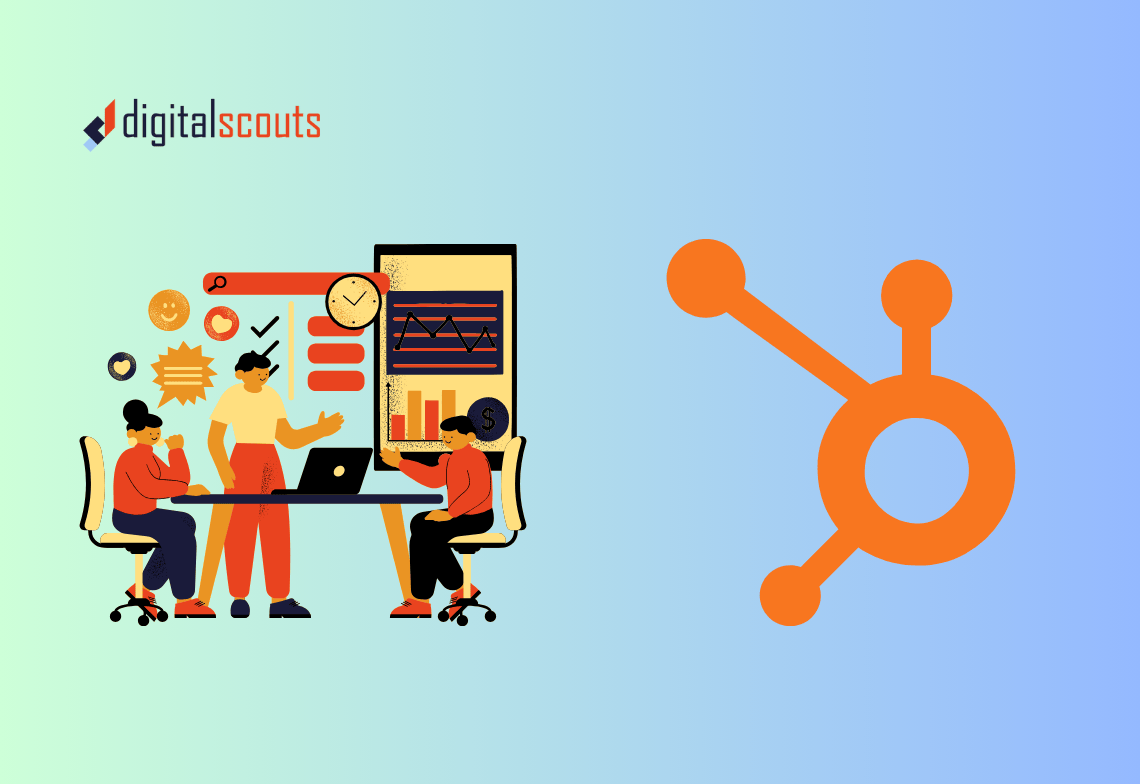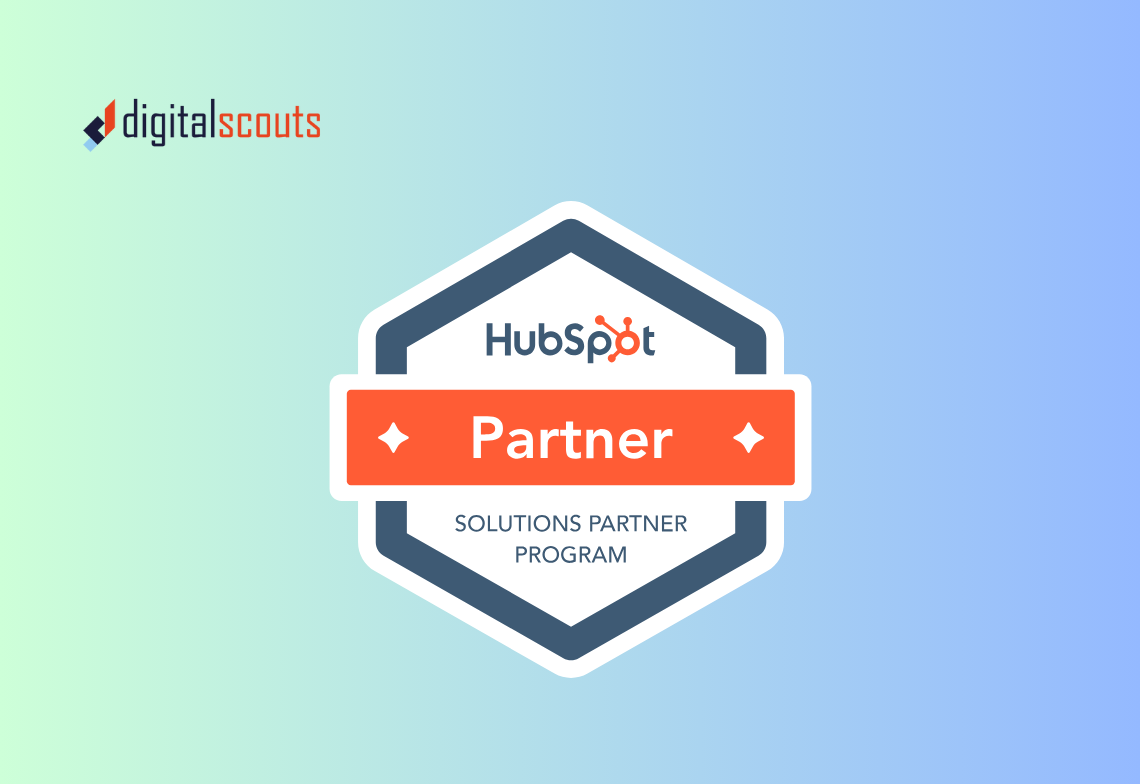At Digitalscouts, B2B marketing isn’t just what we do—it’s what we live and breathe. As a HubSpot Gold Partner and a leading B2B marketing agency, we’ve seen firsthand what works, what doesn’t, and what drives lasting growth. Whether you’re launching a new product, building pipeline, or realigning marketing with revenue goals, having a structured framework makes all the difference. That’s why we created a scalable B2B marketing framework—one that’s actionable, flexible, and tailored to help you align marketing with business outcomes.
Let’s break it down step-by-step.
What Is a B2B Marketing Framework?
A B2B marketing framework is a structured approach to building, executing, and optimizing marketing efforts that drive qualified pipeline and revenue. It connects strategy to execution, so your campaigns are not just creative—but also coordinated, measurable, and scalable.
Our framework includes:
- Understanding Your Ideal Customers and Crafting Value Propositions
- Delivering Consistent Messaging Across Channels
- Strategic Campaign Planning and Execution
- Generating and Nurturing Quality Leads
- Cross-Selling and Upselling to Drive Expansion
- Measuring Success Through Meaningful KPIs
- Integrating Emerging B2B Marketing Trends
Each component reinforces the others. Let’s dive into each.
1. Know Your Audience: ICPs, Personas, and Value Props
A strong foundation starts with clarity. Who are your best-fit customers? What matters to them? And why should they choose you?
Ideal Customer Profiles (ICP)
An ICP outlines the types of companies that are the best fit for your offering—where you can deliver the most value and close the fastest.
Consider:
- Industry & verticals: Where do you create the most impact?
- Company size & stage: Are they growing startups, mid-market teams, or mature enterprises?
- Tech stack & sophistication: Do they need integrations or automation?
For example, if you provide enterprise-grade marketing automation, your ICP might include SaaS businesses with over 100 employees, using Salesforce and expanding internationally.
Buyer Personas
Once you know the accounts, zoom in on the people.
Buyer personas represent the stakeholders who influence buying decisions. Understanding their roles, challenges, and motivations lets you speak their language.
Ask:
- What are their KPIs?
- What do they fear?
- How do they research and evaluate?
If your persona is a RevOps leader, focus on efficiency, attribution, and systems alignment—not just product features.
Value Proposition
A compelling value proposition connects the dots between your solution and their business goals. It should clearly answer:
- What pain do we solve?
- How are we different?
- Why now?
Your value prop is the foundation for every message you create, from cold outreach to web copy.
2. Multi-Channel Consistency
No matter where prospects engage—your website, a webinar, a LinkedIn ad—your brand should show up the same way: clear, credible, and customer-centric.
Core Channels to Align
- Website & landing pages
- Email campaigns & nurture flows
- Social media (especially LinkedIn for B2B)
- Paid media (Google Ads, LinkedIn Ads)
- Content (blogs, whitepapers, videos)
The message doesn’t have to be identical on every channel, but the core narrative—your value proposition—should be consistent.
Tools for Consistency
- Brand messaging guides
- Content calendars
- Marketing automation platforms (like HubSpot or Marketo)
- CRM-integrated campaign planning
When channels work together, they reinforce each other and accelerate decision-making.
3. Campaign Planning and Execution
Great strategy means nothing without great execution. Campaigns are where the rubber meets the road.
Start with a Clear Goal
Are you:
- Launching a new product?
- Driving MQLs for sales?
- Re-engaging dormant pipeline?
Define your campaign objective upfront—along with KPIs and success benchmarks.
Map Your Campaign Journey
- Pre-launch: Research, messaging, content creation
- Launch: Emails, ads, webinars, content push
- Nurture & follow-up: Retargeting, sequences, SDR alignment
- Post-campaign: Analysis, lessons, recycling assets
Use Automation to Scale
With tools like HubSpot, you can:
- Trigger workflows based on behavior
- Score leads automatically
- Route contacts to sales at the right time
Campaign execution becomes a coordinated system—not a manual scramble.
4. Lead Generation & Nurturing
Your campaigns should generate leads—but leads alone don’t pay the bills.
Lead Gen That Prioritizes Quality
Focus on relevance, not just volume. Use gated content, intent data, and buyer signals to attract those most likely to buy.
Examples:
- Whitepapers tailored to different verticals
- Webinars for niche roles (e.g. CFOs in SaaS)
- LinkedIn lead gen ads with clear CTAs
Nurturing With Personalization
Not every lead is ready to buy today—and that’s okay.
Your job is to keep delivering value through targeted content, email sequences, retargeting, and even direct outreach from SDRs.
Tailor nurturing based on:
- Funnel stage
- Persona
- Behavior (e.g., downloaded guide vs. attended demo)
Align with sales to create a seamless handoff once leads are ready.
5. Cross-Selling & Upselling
Growth isn’t just about net-new. Your current customers are often your best source of revenue expansion.
Cross-Sell: Solve Adjacent Problems
For example, if a customer bought your CRM integration, recommend your email automation module as a next step.
Upsell: Unlock More Value
As your customer grows, offer:
- Premium support
- Enterprise-level features
- Usage-based upgrades
Monitor usage patterns, renewal timelines, and satisfaction scores (e.g., NPS) to spot opportunities.
When done well, expansion revenue feels like help—not a hard sell.
6. Measure What Matters
You can’t improve what you don’t track. Metrics are your marketing GPS.
Core B2B Marketing KPIs
- Lead Conversion Rate
- Cost Per Lead (CPL)
- Customer Acquisition Cost (CAC)
- Marketing-Sourced Revenue
- Pipeline Velocity
- Customer Lifetime Value (CLV)
Align Metrics to Funnel Stage
- Top of Funnel → Website traffic, form fills, ad CTR
- Middle of Funnel → SQLs, content engagement, demo requests
- Bottom of Funnel → Win rate, deal velocity, ARR
Regularly analyze what’s working, where the friction is, and what to optimize next.
7. Stay Ahead with B2B Marketing Trends
Foundations come first—but trends give you an edge.
Key Trends to Watch in 2025
- AI-Powered Content & Segmentation: Tools like ChatGPT and Jasper are streamlining messaging and personalization at scale.
- Revenue Operations Integration: Closer alignment between sales, marketing, and customer success is driving more cohesive journeys.
- Short-Form Video for B2B: Even in enterprise sales, video demos, LinkedIn clips, and explainers are outperforming static formats.
- ABX (Account-Based Experience): ABM has evolved. The entire customer lifecycle—from prospecting to renewals—is now part of the experience.
Test emerging tactics alongside your core campaigns to stay agile and modern.
Final Thoughts: Build for Scale, Execute with Precision
B2B marketing is more than just generating leads—it’s about building systems that consistently create pipeline and revenue.
By using this framework, you can:
- Stay aligned with your buyers
- Execute across channels with clarity
- Optimize for performance at every stage
At Digitalscouts, we specialize in helping B2B brands build marketing engines that scale—from strategy to execution to RevOps integration.
Need help building your own framework? Let’s chat.
Our team can work with you to design, launch, and optimize a custom strategy tailored to your goals.
Contact us today to schedule a strategy session.
Matthew Rowlands is an AI & Digital Strategist at DigitalScouts, where he helps B2B teams integrate AI tools like HubSpot Breeze Agents into their marketing and RevOps workflows. He writes about automation, SEO, and using generative AI to scale content and campaigns.

.png?width=960&height=640&name=B2B%20Marketing%20Framnework%20(1).png)


.png?width=94&height=94&name=SEO%20Strategies%20for%202025%20(1).png)

.png)

